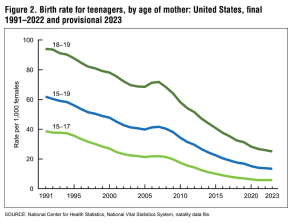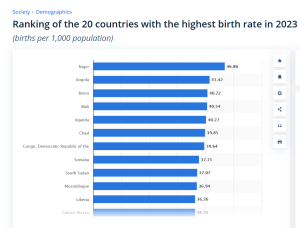One of our staff members is contributing considerably to a News Archiving service at Mu. Any well educated (Masters, PhD or above) users who wish to make comments on news sites, please contact Jim Burton directly rather than using this list, and we can work on maximising view count.
Low birth rate and young people's sexual rights

Total fertility rate (the average number of children birthed by a woman) is estimated to be at around the global replacement rate of 2.0-2.4 in the 2020s. Where fertility rate falls below replacement rate, global population starts to go into decline, negatively impacting economic performance and increasing the relative number of elderly and infirm people in developed societies.
It has been suggested that one way of increasing birth/fertility rate is to relax laws against statutory rape and allow some degree of Youth-Adult Marriage, reintroducing pre- and postwar dating norms and normalizing teen pregnancies. More permissive norms with respect to the agency and capacities of youth might also be pursued to combat ageism, providing the basis for a broad cultural coalition between those concerned with the slow decline of western societies, and those more alarmed by potential back-slippage towards regressive social values.
One particular statistic of relevance to western economies is Muslim population growth, and the continuing technological and military advancement of the Islamic world.
Initiatives
In 2024, Russia made it's first moves towards banning the ideology of antinatalism:[1]

We are now actively preparing bills to prevent the spread of child-free ideology. One should not be able to promote ideas that “nowadays girls, especially young ones, do not need to give birth, they can do without children”
External links
- How should countries deal with falling birth rates?
- The Lancet: Dramatic declines in global fertility rates set to transform global population patterns by 2100
- The city of love is in a sex recession — God help the rest of us